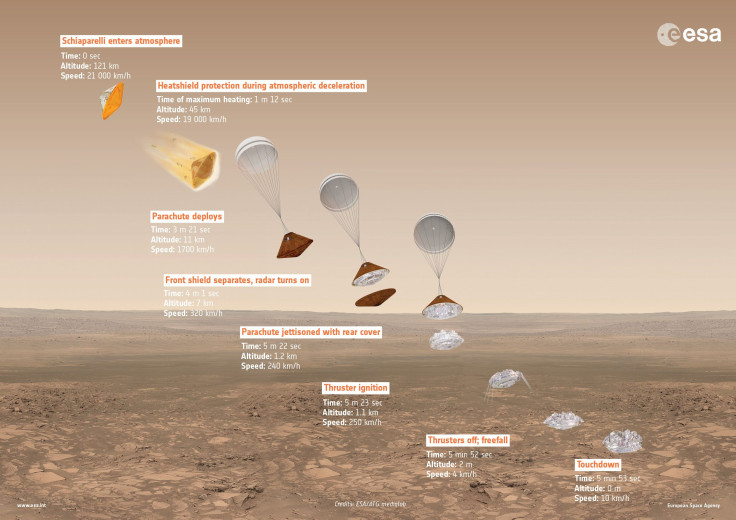ExoMars, Europe And Russia’s Joint Mars Mission, Begins Its 7-Month Journey

Signals from ExoMars — a spacecraft sent to Mars in the first phase of a joint mission by the European Space Agency (ESA) and Russia’s Roscosmos — received just hours after liftoff from the Baikonur Cosmodrome in Kazakhstan confirmed that the launch was successful and the spacecraft is in good health.
“Acquisition of signal confirmed. We have a mission to Mars!” the ESA said in a brief statement issued at 5:29 p.m. EDT Monday.
The first phase of the ExoMars mission consists of two separate modules — the Trace Gas Orbiter (TGO) and the Schiaparelli landing module. The orbiter and the lander will reach Mars in October after completing a journey of over 300 million miles. Three days before reaching the atmosphere of Mars, Schiaparelli will be ejected from the orbiter.

Once it has dropped off Schiaparelli on the red planet, the TGO will spend the better part of a year maneuvering itself into orbit, nearly 250 miles above the surface. ESA aims to use the orbiter as a data relay point for the second ExoMars mission, planned for launch in 2018. It will also provide data relay for NASA rovers.
#ICYMI we’re on our way to Mars with our #ExoMars @ESA_TGO mission! https://t.co/R12DRuOWfd pic.twitter.com/9Cm5Jc7lSt
— @ESA_ExoMars (@ESA_ExoMars) March 15, 2016
“It’s been a long journey getting the first ExoMars mission to the launch pad, but thanks to the hard work and dedication of our international teams, a new era of Mars exploration is now within our reach,” ESA’s Director General Johann-Dietrich Woerner said in a statement Monday.
The main objective of the ExoMars mission is to search for evidence of methane — a gas emitted by living microbes on Earth, and traces of which have been observed by previous Mars missions — and other trace atmospheric gases that could be signatures of active biological or geological processes. Since a simple organic molecule like methane should be easily destroyed in the harsh, radiation-rich Martian environment, its existence indicates a replenishing source, one that may be either biological or geological.
“We’re not only looking forward to the world-class science data that this mission will return, but it is also significant in paving the way for the second ExoMars mission, which will move our expertise from in-orbit observations to surface and subsurface exploration of Mars,” Alvaro Giménez, ESA’s director of science, said in the statement.
© Copyright IBTimes 2025. All rights reserved.






















